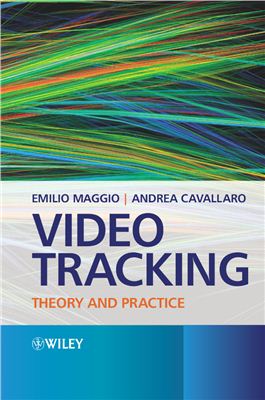Dr Emilio Maggio, Dr Andrea Cavallaro. Video Tracking: Theory and
Practice. Wiley, 2011. - 280 p. - ISBN: 978-0470749647
(Видеослежение: теория и практика)
Video Tracking provides a comprehensive treatment of the fundamental aspects of algorithm and application development for the task of estimating, over time, the position of objects of interest seen through cameras. Starting from the general problem definition and a review of existing and emerging video tracking applications, the book discusses popular methods, such as those based on correlation and gradient-descent. Using practical examples, the reader is introduced to the advantages and limitations of deterministic approaches, and is then guided toward more advanced video tracking solutions, such as those based on the Bayes’ recursive framework and on Random Finite Sets.
The book aims to help researchers and practitioners develop techniques and solutions based on the potential of video tracking applications. The design methodologies discussed throughout the book provide guidelines for developers in the industry working on vision-based applications. The book may also serve as a reference for engineering and computer science graduate students involved in vision, robotics, human-computer interaction, smart environments and virtual reality programmes.
Video Tracking provides a comprehensive treatment of the fundamental aspects of algorithm and application development for the task of estimating, over time, the position of objects of interest seen through cameras. Starting from the general problem definition and a review of existing and emerging video tracking applications, the book discusses popular methods, such as those based on correlation and gradient-descent. Using practical examples, the reader is introduced to the advantages and limitations of deterministic approaches, and is then guided toward more advanced video tracking solutions, such as those based on the Bayes’ recursive framework and on Random Finite Sets.
The book aims to help researchers and practitioners develop techniques and solutions based on the potential of video tracking applications. The design methodologies discussed throughout the book provide guidelines for developers in the industry working on vision-based applications. The book may also serve as a reference for engineering and computer science graduate students involved in vision, robotics, human-computer interaction, smart environments and virtual reality programmes.

